
JMIR Aging
Scope & Guideline
Shaping the Future of Geriatrics and Gerontology
Introduction
Aims and Scopes
- Digital Health Interventions:
Research on the development, implementation, and evaluation of digital health technologies aimed at improving health outcomes for older adults. - Assistive Technologies:
Studies focusing on the design and effectiveness of assistive devices and technologies that support daily living and independence among older adults. - Cognitive Health and Aging:
Exploration of cognitive interventions, assessments, and technologies that aid in the detection and management of cognitive decline in older populations. - Social Engagement and Loneliness:
Investigations into how technology can facilitate social connections and combat loneliness among older adults, particularly in the context of caregiving. - Telehealth and Remote Monitoring:
Research on telemedicine, remote monitoring, and digital health services that enhance healthcare access for older individuals. - Health Literacy and Technology Adoption:
Studies examining the factors influencing older adults' acceptance and use of health technologies, with an emphasis on health literacy.
Trending and Emerging
- Artificial Intelligence and Machine Learning:
The integration of AI and machine learning in predicting health outcomes and personalizing care for older adults is gaining traction, reflecting advancements in data analytics. - Smart Home Technologies:
Increasing research on smart home devices and their role in supporting aging in place, focusing on safety, monitoring, and enhancing autonomy for older adults. - Mental Health and Well-Being Interventions:
A noticeable rise in studies targeting mental health among older adults through digital platforms, emphasizing the importance of emotional support and engagement. - Intergenerational Technology Use:
Research that explores how technology can bridge the gap between generations, fostering connections and support systems for older adults. - Health Equity and Technology Access:
Emerging themes focus on the disparities in technology access among older adults, emphasizing the need for inclusive digital health solutions.
Declining or Waning
- Traditional Care Models:
Research centered around conventional, non-digital forms of care for older adults is declining as the focus shifts toward technology-enabled solutions. - General Aging Research Without Technological Focus:
Papers that explore aging from a purely biological or sociological perspective without integrating technology are becoming less common. - Non-Digital Social Interventions:
Studies focused solely on face-to-face social interventions without the incorporation of digital tools are waning in favor of technology-based approaches. - Single-Factor Health Assessments:
Research examining individual health factors in isolation, without considering the broader context of technology and multiple health determinants, is less emphasized.
Similar Journals

Ageing International
Navigating the Complexities of Ageing in SocietyAgeing International, published by SPRINGER, is a distinguished journal that has been at the forefront of scholarly research in the field of gerontology and aging studies since its inception in 1974. With an ISSN of 0163-5158 and an E-ISSN of 1936-606X, this journal provides a platform for high-quality, peer-reviewed articles that address the multifaceted aspects of aging on both individual and societal levels. Recognized as a Q2 category journal in Health (social science) for 2023, Ageing International plays a critical role in disseminating knowledge that influences practice, policy, and future research directions in the ever-evolving landscape of aging. Researchers, professionals, and students will find this journal indispensable for staying current with cutting-edge analyses and discussions, as it holds a Scopus rank of #168 in the social sciences realm, placing it within the 54th percentile of its category. Although it does not offer an open-access model, its extensive archive and ongoing contributions to the literature make it essential reading for anyone engaged in understanding the challenges and opportunities of aging in society. The editorial office is located at ONE NEW YORK PLAZA, SUITE 4600, NEW YORK, NY 10004, UNITED STATES, further emphasizing its dedicated presence in the academic community.
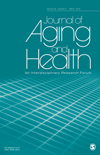
JOURNAL OF AGING AND HEALTH
Innovating research for a healthier aging population.The JOURNAL OF AGING AND HEALTH, published by SAGE PUBLICATIONS INC, is a preeminent peer-reviewed journal dedicated to advancing research in the field of gerontology and related disciplines. With an impressive impact factor and ranked Q1 across multiple categories including Community and Home Care, Geriatrics and Gerontology, and Health (Social Science), this journal has established itself as a vital resource for academics, clinicians, and policymakers alike. Spanning over three decades of publication from 1989 to 2024, it serves as a platform for innovative research and multifaceted discussions on aging, health, and the interplay of social factors influencing the elderly population. The journal's rigorous standards for publication ensure high-quality contributions that are impactful and relevant, making it an essential read for those dedicated to improving the health and quality of life for older adults. Although it is not an open-access journal, it provides comprehensive insights that are critical to understanding the complexities of aging in today's society.
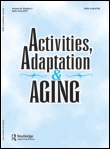
Activities Adaptation & Aging
Innovating pathways to enhance quality of life in aging.Activities Adaptation & Aging is a leading journal dedicated to the intersection of aging research, health professions, and gerontology, published by Routledge Journals, Taylor & Francis Ltd. With its origins dating back to 1981, this journal has established itself as a vital resource for scholars and practitioners alike, focusing on innovative approaches to enhance the quality of life for older adults. The journal’s inclusion in various prestigious Scopus ranks—such as being positioned in the 92nd percentile for Health Professions (miscellaneous)—reflects its significant impact in the field. Operating without open access, it provides essential insights and empirical research that are crucial for advancing knowledge and practices related to adaptation and engagement in aging. With a strong reputation built over the decades, Activities Adaptation & Aging continues to be an essential platform for disseminating research findings, fostering scholarly dialogue, and promoting effective interventions for aging populations.
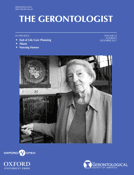
GERONTOLOGIST
Innovating Care for Older AdultsThe GERONTOLOGIST, published by Oxford University Press Inc, is a premier journal in the field of geriatrics and gerontology, with a distinguished history since its inception in 1961. This esteemed journal stands out with its impressive Q1 rankings in prominent categories, including Geriatrics and Gerontology, reflecting its vital role in disseminating innovative research and advancing knowledge within these critical disciplines. With an impact factor that ranks it among the top journals in both Nursing Gerontology and Medicine, the GERONTOLOGIST serves as a key resource for researchers, professionals, and students dedicated to enhancing the health and well-being of older adults. Although it operates under a traditional access model, the journal remains committed to publishing cutting-edge studies that address the complexities of aging and inform evidence-based practices. By fostering a rich dialogue among scholars and practitioners, the GERONTOLOGIST is instrumental in shaping the future of gerontological research and policy.
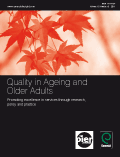
Quality in Ageing and Older Adults
Illuminating Pathways to Enhanced Aging ExperiencesQuality in Ageing and Older Adults is an esteemed journal published by Emerald Group Publishing Ltd, dedicated to elucidating the complexities and challenges of aging and the quality of life for older adults. With a focus on critical areas within Care Planning, Community and Home Care, and Gerontology, this journal serves as a vital resource for researchers, healthcare professionals, and students alike. Recognized for its scholarly contributions, it holds a Q2 ranking for Care Planning and Community and Home Care and maintains an impactful presence in Gerontology, further demonstrated by its Scopus rankings. Although the journal does not offer open access, its commitment to advancing knowledge in the field is underscored by its ongoing publication since 2000 and its broad scholarly reach until 2024. By fostering innovative research and practical insights, Quality in Ageing and Older Adults continues to play a crucial role in informing policy, enhancing care practices, and improving outcomes for older individuals.

Aging Medicine
Exploring the Frontiers of Aging ResearchAging Medicine, published by Wiley, is a pivotal open-access journal that has been at the forefront of research dedicated to the aging population since its inception in 2018. With a focus on both geriatric care and gerontology, the journal serves as a crucial resource for researchers, healthcare professionals, and students interested in understanding the complexities of aging and the related medical challenges. Although it holds a Q3 quartile ranking in the fields of Aging and Geriatrics and Gerontology according to the 2023 metrics, the journal continues to effectively disseminate valuable research and insights, helping to bridge gaps in knowledge and practice. With an E-ISSN of 2475-0360, it offers an open-access model that ensures broader accessibility to its published content, thus promoting collaboration and innovation across disciplines. As the journal converges towards 2024, it remains committed to evolving with the dynamics of aging research, making it a significant platform for the exchange of ideas and advancements in this essential field.

Advances in Gerontology
Advancing Knowledge in GerontologyAdvances in Gerontology is a pivotal academic journal dedicated to the field of gerontology, published by PLEIADES PUBLISHING INC. With its ISSN 2079-0570 and E-ISSN 2079-0589, this journal serves as an essential platform for researchers, healthcare professionals, and students focused on aging and related health issues. Although currently not an open-access journal, it aspires to enrich the scholarly community by disseminating high-quality research from 2011 through 2024. The journal is recognized in the lower quartile of its category, ranking Q4 in both Geriatrics and Gerontology, reflecting its commitment to addressing emerging topics in the aging population despite its lower visibility in the competitive landscape. As it continues to explore critical areas in gerontology, Advances in Gerontology invites contributions that advance knowledge, foster understanding, and inform practices within this essential field of study.
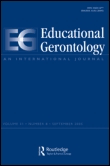
EDUCATIONAL GERONTOLOGY
Pioneering research for a wiser, more educated aging population.EDUCATIONAL GERONTOLOGY, published by Taylor & Francis Inc, is a leading academic journal dedicated to the study of education and aging. With an ISSN of 0360-1277 and an E-ISSN of 1521-0472, this journal has been an essential resource since its inception in 1976, continuing to provide invaluable insights until 2024. As an authoritative platform in the fields of Education and Gerontology, it ranks in the Q2 category for Education and Q3 in Geriatrics and Gerontology, reflecting its significant contribution to these domains. The journal is well-regarded for its rigorous peer-reviewed articles that explore innovative educational practices for older adults and address the challenges faced by this demographic. Researchers, professionals, and students alike can benefit from the multidisciplinary approaches and comprehensive research findings presented within its pages, making it a vital tool for advancing knowledge and practice in educational gerontology.

Journal of Gerontology and Geriatrics
Connecting Research to Geriatric Care InsightsJournal of Gerontology and Geriatrics, published by PACINI EDITORE, is a crucial resource for those dedicated to the study of aging and geriatric health. Since its inception in 2016, this journal has aimed to disseminate high-quality research and findings that address the intricate biological, social, and psychological aspects of aging. With ISSN 2499-6564 and E-ISSN 2499-6564, it strives to foster discussions that enhance our understanding of gerontology and geriatrics on a global scale, despite its current positioning in the Q4 quartile of academic rankings. Located in Pisa, Italy, the journal invites contributions from researchers, professionals, and students who are passionate about advancing knowledge in these critical fields. Although it currently does not offer open access, the journal plays a vital role in connecting the community with essential insights that guide both research and practice in geriatric care.

European Review of Aging and Physical Activity
Pioneering research for a vibrant and active aging population.European Review of Aging and Physical Activity is a leading peer-reviewed journal published by SPRINGER HEIDELBERG, focusing on the intersection of gerontology and physical activity. With an impact factor placing it in the Q1 category for Geriatrics and Gerontology, this journal serves as a vital resource for researchers, healthcare professionals, and students dedicated to advancing the understanding of how physical activity influences aging. Open Access since 2015, it provides broad accessibility to its high-quality research, ensuring that pivotal findings are available to a global audience. The journal's Scopus ranking further underscores its impact, being positioned at #17 out of 116 in the field of Geriatrics and Gerontology, placing it in the 85th percentile. Published from Germany, the European Review of Aging and Physical Activity continues to address pertinent issues in the field, facilitating discourse and innovation for better health outcomes in aging populations.